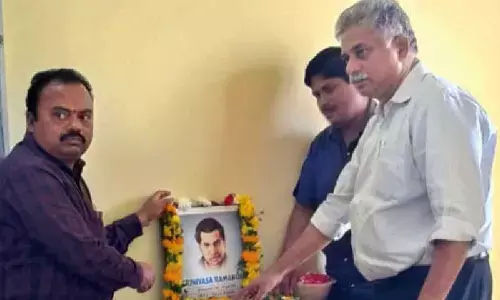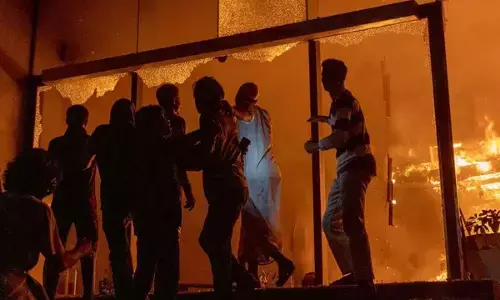The goddess of Nilachal
Located atop Nilachal hills in Guwahati…the Kamakhya temple draws huge crowds from across India and the world on a daily basis….
As we drive down to the hotel, we are fascinated by the verdant green Nilachal hills, clear blue skies and the whiff of fresh air that wafts across. We are in Guwahati the largest of the northeastern cities, known as the gateway to the northeast with the Brahmaputra River on one side and the Shilling plateau on the other. "This temple is very famous as Kamakhya is a wish-fulfilling goddess. I just dropped a couple whom I took from the airport to the temple and back. They made no other stop as they were here to thank the goddess after their wish was fulfilled," our cab driver Basheer tells us. This temple is the top destination followed by Umananda temple situated on an island and the Navagraha temple for pilgrims visiting the city according to him. We make our way past shops selling flowers, puja items and handicrafts to reach the 16th-century temple of the Tantric goddess of desire who evolved in the Himalayan region. We see beautifully sculptured panels and images of Ganesha and other Hindus gods and goddesses on the outward structure and the temple shikhara in a beehive style characteristic of lower Assam rising above as we step into the temple complex.
Said to be built during the time of the Ahom Kings after the original temple was destroyed the present structure has three chambers with the middle one which is square-shaped housing the garbha griha or sanctum sanctorum. The temple was destroyed during the middle of the second millennium and a revised structure was said to have been constructed by Chilarais of the Koch dynasty in the style of medieval temples. The Ahom kings preserved remnants of the Koch style while making additional constructions with aesthetics and temple specifications in mind. Inscriptions and images of nara-narayana seen here are part of this addition, the priest accompanying us informs us. We are led into the sanctum sanctorum which is inside a cave behind this idol. We climb down narrow steep stone steps and bend to get inside the dark cave lit up by oil lamps placed on a raised platform. There is however no image of the goddess here and the priest asks us to kneel to see a natural underwater spring that flows throughout the year through a cleft in the bedrock shaped like a vulva or yoni. We are asked to take some water from the spring and sprinkle it on our head while flowers and other offerings are placed near the oil lamp above. An important Shakti Peetha where the yoni of Goddess Sati Devi fell, devotees move in a single file pray to the yoni and leave. It is the vulva shaped depression that is worshipped as the goddess Kamkhya. All special prayers are offered at the idol of the goddess on the way to the cave housing the shakti pita.
There are various legends associated with the temple which is said to be a place of tantric worship but the most accepted one seems to be that which associates Kamkhya with goddess Kali and lays emphasis on the creative symbolism of the yoni. The rituals at the temple begin at 5:50 am every day with the snana (bath) given to the pithastana followed by Nitya pooja after which the temple opens to devotees around 8 am. Most pilgrims are seen during this time as the temple closes by 5:30 pm with a lunch break in the afternoon. In the queue, we saw many pilgrims from Bengal, Odisha and the southern States. As we complete a pradakshinam around the temple we see devotees chanting prayers, those lighting lamps and others seated in quiet contemplation before leaving. By 6 pm, darkness descends on the Nilachal hills and the temple doors are closed until the next morning. Kamakhya then is a unique experience. It is a glimpse of the divine sans the normal imagery and replete with natural beauty.





















